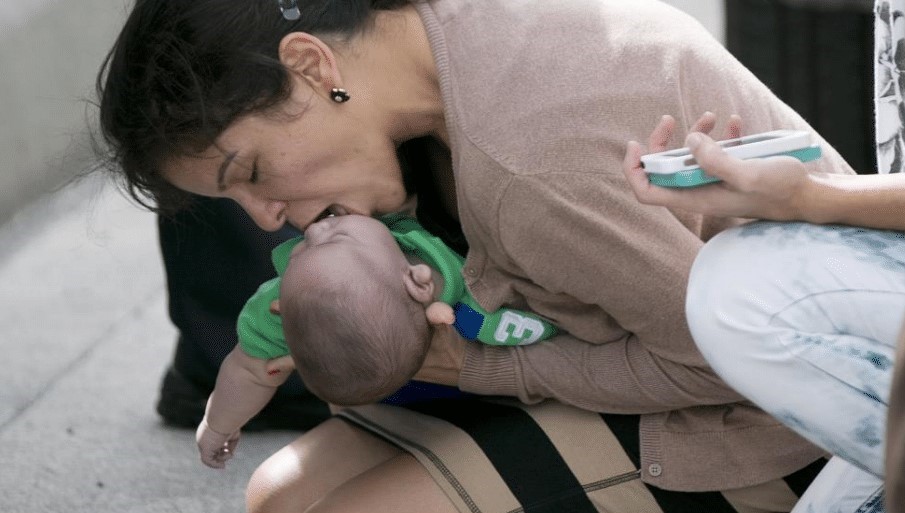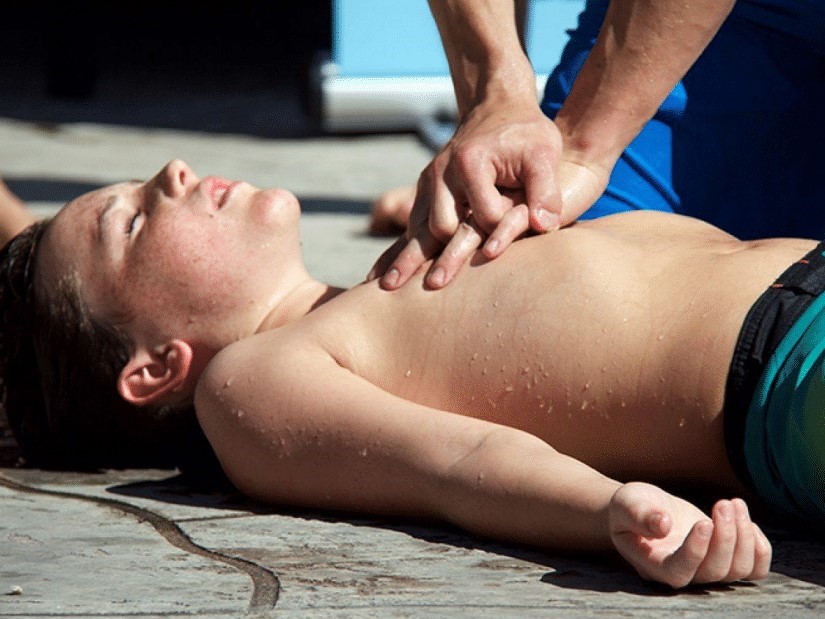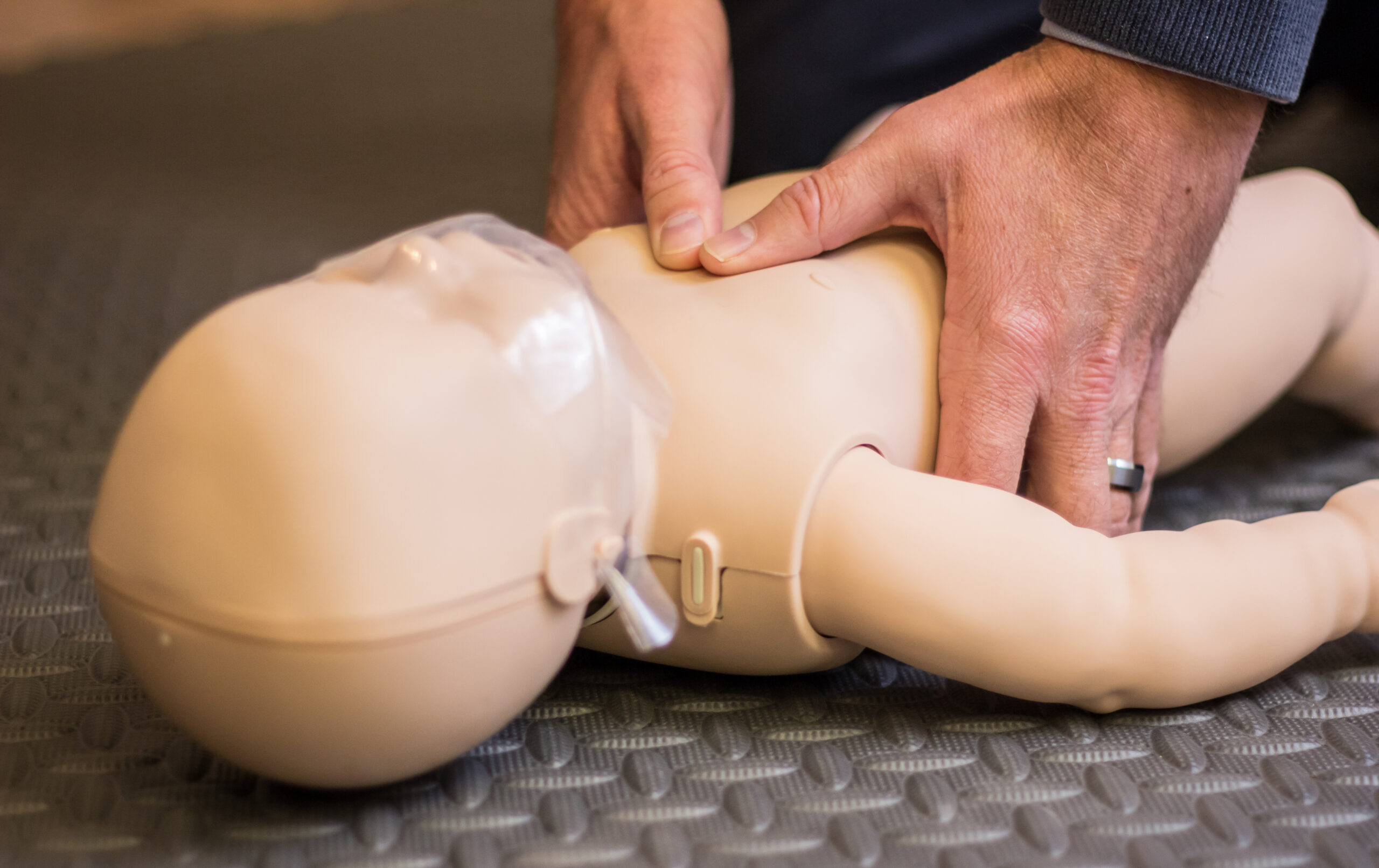Pediatric BLS for Two or More Rescuers
Short Description
This algorithm ensures that a pediatric patient receives the appropriate BLS care when more than one rescuer is available.
Algorithm at a Glance
- Ensure scene safety
- Identify responsiveness
- Check for pulse and respirations
- Perform CPR as needed
- Use an AED when available
Goals for Management
The rescuer will be able to:
- Quickly recognize the need for BLS
- Intervene quickly using rescue breathing (if trained) and high-quality CPR
- Prevent deterioration
The Pediatric BLS for Multiple Rescuers Algorithm
This algorithm outlines the steps for assessing and managing children presenting with a need for basic life support when multiple rescuers are present.
BLS HCP Pediatric Cardiac Arrest for Two or More Rescuers Algorithm
Box 1: Ensure Scene Safety
The rescuer looks around the environment to ensure safety before tending to the child. If the scene is not secure, the rescuer moves the child to a safe area. If the area is safe, the rescuer does not attempt to move the child because movement can worsen the injury.
Box 2: Unresponsive Child
The rescuer taps the child’s shoulder, rubs his feet or belly, and shouts, “are you all right?” If the child does not respond, the second rescuer leaves to find help and activates the emergency response system. The first rescuer can use a cell phone and put the dispatcher on speakerphone for communication.
Box 3: Visualize Chest Rise and Check Pulse
- If a pulse is present with normal breathing, the rescuer proceeds to Box 3a.
- If a pulse is present with abnormal or absent breathing, the rescuer proceeds to Box 3b.
- If no pulse is present with abnormal or absent breathing, the rescuer proceeds to Box 4.
Box 3a: Pulse Present and Normal Breathing
If the child is breathing and has a pulse, the rescuer should stay with the child until EMS arrives.
Box 3b: Pulse Present and Abnormal Breathing
If the child is not breathing but has a pulse > 60 bpm, the rescuer begins rescue breathing, providing one breath every 2–3 seconds. The rescuer also checks the child’s pulse every 2 minutes. If the child has no pulse and no breathing at any time, the rescuer proceeds to box 4.
Related Video – Understanding Agonal Breathing
Box 4: Initiate CPR
The first rescuer begins CPR with 30 compressions followed by two rescue breaths until the AED arrives. When a second rescuer is available, the rescuers change the compression to ventilation ratio to 15 compressions followed by two rescue breaths.
Box 5: Attach AED
When the AED is available, the second rescuer opens the unit and follows the verbal instructions. The rescuer attaches the pads per the diagram on the AED. Compressions are paused to allow the AED to analyze the heart rhythm.
- If the AED determines the child’s rhythm is shockable, it will tell the rescuers to deliver a shock. The rescuers proceed to Box 6.
- If the AED determines that the child’s rhythm is nonshockable, it will tell the rescuers to continue CPR. The rescuers proceed to Box 7.
Box 6: Administer Shock
The rescuers ensure that no one is touching the child and push the shock button on the AED. The rescuers immediately resume CPR following the shock.
Box 7: Resume CPR
The rescuers immediately resume high-quality CPR until advised by the AED to stop for a rhythm check. The rescuers continue to provide CPR and shocks until the child moves or EMS arrives.

A rescuer performs infant CPR.

A rescuer performs child CPR.
Recap of Two-Rescuer Algorithm
If two rescuers are available, they use the same algorithm as for one-rescuer BLS with the following exceptions:
- As soon as it is determined that the child is not breathing or responsive, the second rescuer should immediately activate EMS and go to find an AED.
- As soon as another rescuer arrives, the compression to ventilation ratio is changed from 30:2 to 15:2 (2 breaths after every 15 compressions).
- The Two Thumb-Encircling Hands Technique is used for compressions.

Two-Thumbs Encircling Hands Technique